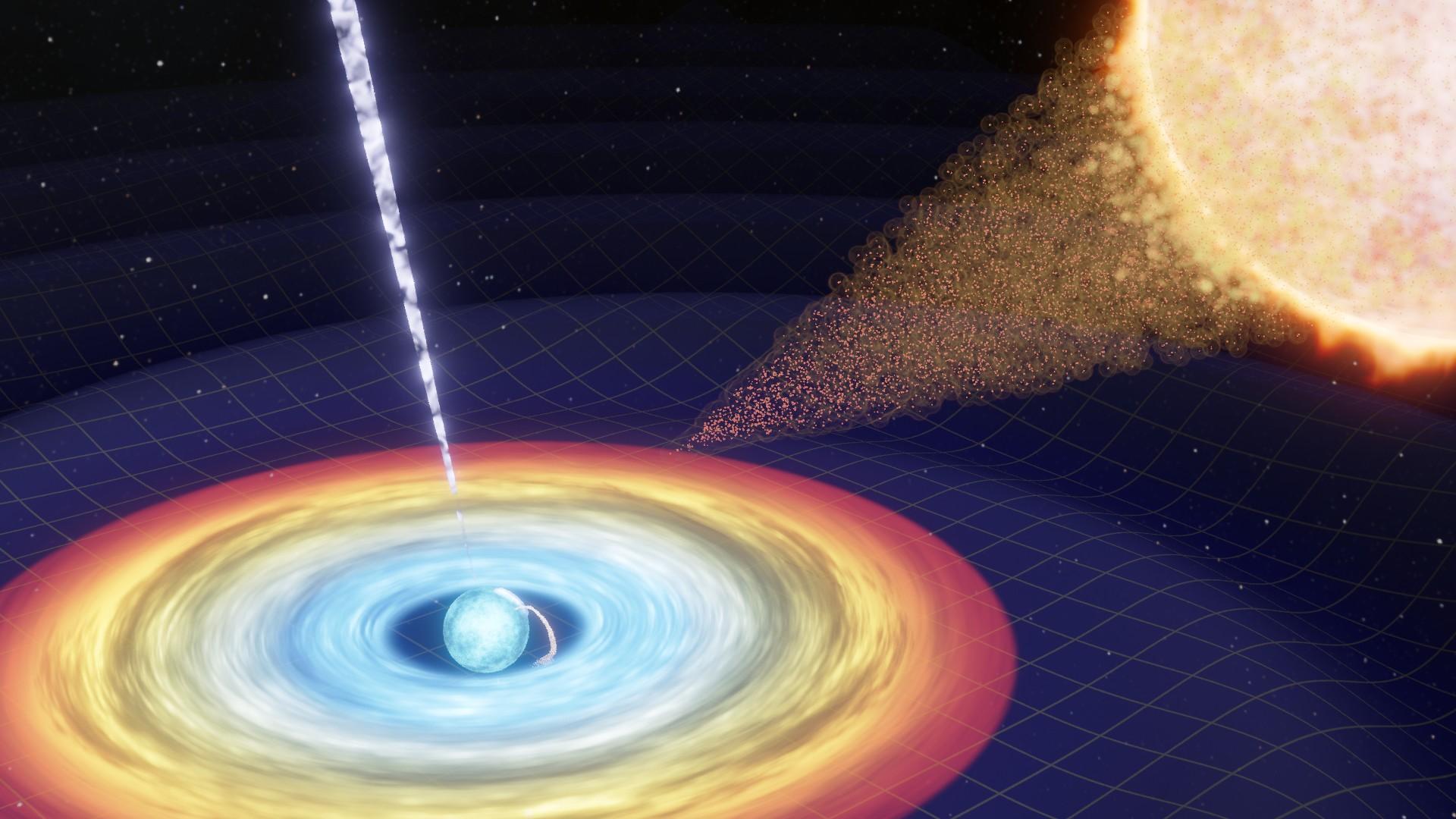
Artist's impression of continuous gravitational waves generated by a spinning asymmetric neutron star. Image: Mark Myers, OzGrav-Swinburne University
Australian researchers from the ARC Centre of Excellence for Gravitational Wave Discovery (OzGrav) team, which includes scientists from the University of Adelaide, are close to detecting a new type of gravitational wave, which could provide insights into one of the strangest things in the Universe.
Using data from the LIGO detectors in the US and the VIGO detector in Europe, the scientists are on the cusp of hearing what they call a continuous gravitational wave or the murmuring of a neutron star.
The OzGrav team includes PhD student Deeksha Beniwal from the University of Adelaide's School of Physical Sciences, who is working alongside scientists from the Australian National University, the University of Melbourne and the University of Western Australia.
"Gravitational-wave observations from the LIGO and Virgo detectors have allowed us to set realistic constraints on signals expected from young pulsars. The observations also provide an opportunity to test out different pipelines - such as different search methods for continuous wave signals - in realistic environments," she said.
After a star collapses it either forms a black hole or if that hasn't happened, a neutron star is created. Neutron stars are the densest things in the Universe. They are as dense as the Sun but only twenty kilometres across, about the size of a city. There is still much to discover about the stars that spin at thousands of revolutions per second, which is why detecting them will help scientists study them.
If they are not perfectly spherical, they tend to wobble and emit a faint humming sound: a continuous gravitational wave.
The problem is that the continuous gravitational waves are like a humming bee in a garden surrounded by shrieking wildlife: very hard to detect and so far elusive.
So far, the structure of neutron stars is an open question and is consequently of great interest to all kinds of physicists. Even without a detection, a search allows them to peek behind the curtain at the unknown physics of neutron stars.
The search is on to detect the continuous gravitational waves. Scientists have used data from LIGO and VIGO to look at young supernovae, which are remnants of stars that contain young neutron stars. Scientists believe that these are the easiest to detect as they haven't had enough time to even out their configuration: they are the most 'wobbly'.
The results from the searches for continuous gravitational waves from young supernova remnants by LIGO, were released on 28 May.






